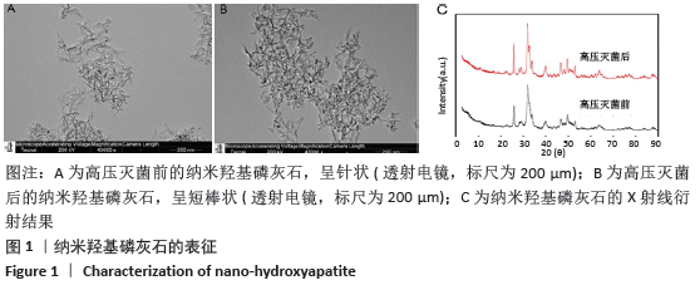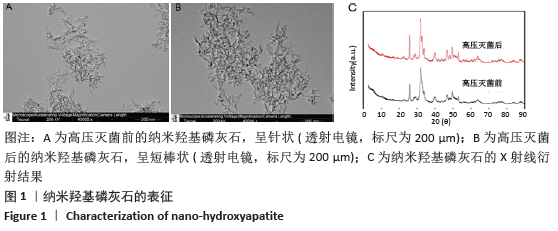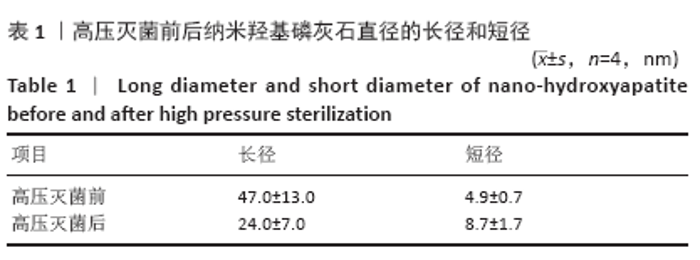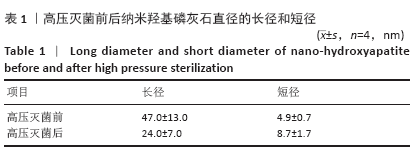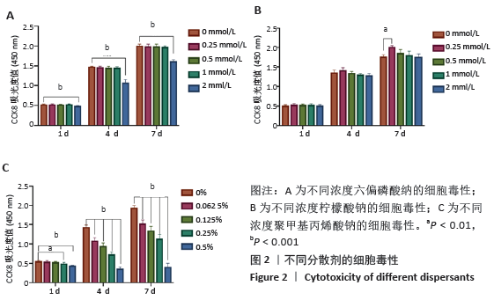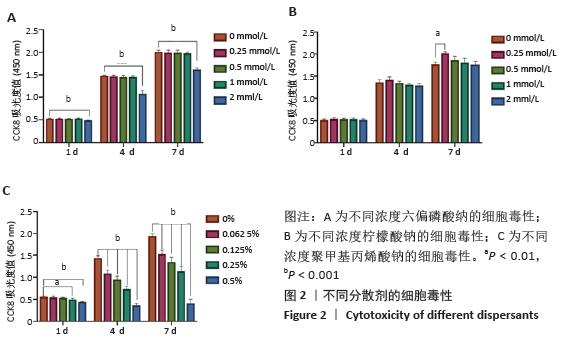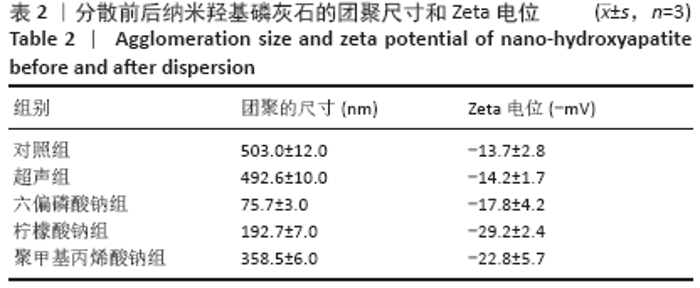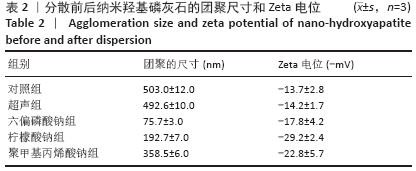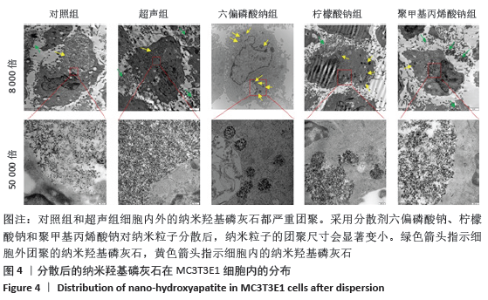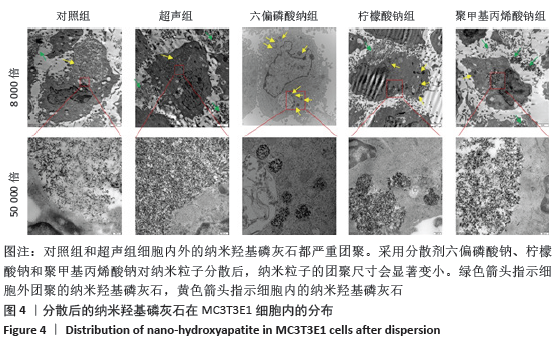[1] WILSON CE, KRUYT MC, DE BRUIJN JD, et al. A new in vivo screening model for posterior spinal bone formation: comparison of ten calcium phosphate ceramic material treatments. Biomaterials. 2006;27(3):302-314.
[2] PANG XF, ZHOU HW, LIU JL. Investigation of biological property of nanohydroxyapatite materials. J Nanosci Nanotechnol. 2012; 12(2):894-901.
[3] LIU YK, WANG GC, CAI YR, et al. In vitro effects of nanophase hydroxyapatite particles on proliferation and osteogenic differentiation of bone marrow-derived mesenchymal stem cells. J Biomed Mater Res A. 2009;90(4):1083-1091.
[4] WANG YF, WANG JL, HAO H, et al. In Vitro and in Vivo Mechanism of Bone Tumor Inhibition by Selenium-Doped Bone Mineral Nanoparticles. ACS Nano. 2016;10(11):9927-9937.
[5] SALMASI S, NAYYER L, SEIFALIAN AM, et al.Nanohydroxyapatite Effect on the Degradation, Osteoconduction and Mechanical Properties of Polymeric Bone Tissue Engineered Scaffolds. Open Orthop J. 2016; 10:900-919.
[6] XIA LG, LIN K, JIANG XQ, et al. Effect of nano-structured bioceramic surface on osteogenic differentiation of adipose derived stem cells. Biomaterials. 2014;35(30):8514-8527.
[7] MATSUMOTO T, OKAZAKI M, INOUE M. Hydroxyapatite particles as a controlled release carrier of protein. Biomaterials. 2004;25(17): 3807-3812.
[8] ZHANG K, ZHOU Y, XIAO C, et al. Application of hydroxyapatite nanoparticles in tumor-associated bone segmental defect. Sci Adv. 2019;5(8):eaax6946.
[9] WANG RX, LIU WF, WANG Q, et al. Anti-osteosarcoma effect of hydroxyapatite nanoparticles both in vitro and in vivo by downregulating the FAK/PI3K/Akt signaling pathway. Biomater Sci. 2020;8(16):4426-4437.
[10] FOX K, TRAN PA,TRAN N. Recent advances in research applications of nanophase hydroxyapatite. Chemphyschem. 2012;13(10):2495-2506.
[11] LOO SCJ, MOORE T, BANIK B, et al. Biomedical applications of hydroxyapatite nanoparticles. Curr Pharm Biotechnol. 2010;11(4): 333-342.
[12] WU BB, LI Y, NIE NF, et al. Nano genome altas (NGA) of body wide organ responses. Biomaterials. 2019;205:38-49.
[13] MÜLLER KH, MOTSKIN M, PHILPOTT AJ, et al. The effect of particle agglomeration on the formation of a surface-connected compartment induced by hydroxyapatite nanoparticles in human monocyte-derived macrophages. Biomaterials. 2014;35(3):1074-1088.
[14] WANG R, HU H, GUO J, et al. Nano-Hydroxyapatite Modulates Osteoblast Differentiation Through Autophagy Induction via mTOR Signaling Pathway. J Biomed Nanotechnol. 2019;15(2):405-415.
[15] MURUGADOSS S, BRASSINNE F, SEBAIHI N, Et al. Agglomeration of titanium dioxide nanoparticles increases toxicological responses in vitro and in vivo. Part Fibre Toxicol. 2020;17(1):10.
[16] TANG C, LI X, TANG Y, et al. Agglomeration mechanism and restraint measures of SiO2 nanoparticles in meta-aramid fibers doping modification via molecular dynamics simulations. Nanotechnology. 2020;31(16):165702.
[17] LIANG Y, HILAL N, LANGSTON P, et al. Interaction forces between colloidal particles in liquid: Theory and experiment. Adv Colloid Interface Sci. 2007;(134-135):151-166.
[18] WANG H, MA R, NIENHAUS K, et al. Formation of a Monolayer Protein Corona around Polystyrene Nanoparticles and Implications for Nanoparticle Agglomeration. Small. 2019;15(22):e1900974.
[19] HA SW, JANG HL, NAM KT, et al. Nano-hydroxyapatite modulates osteoblast lineage commitment by stimulation of DNA methylation and regulation of gene expression. Biomaterials. 2015;65:32-42.
[20] LÓPEZ-MACIPE A, GÓMEZ-MORALES J, RODRıGUEZ-CLEMENTE R. The Role of pH in the Adsorption of Citrate Ions on Hydroxyapatite. J Colloid Interface Sci. 1998;200(1):114-120.
[21] CUNNINGHAM E, DUNNE N, WALKER G, et al. High-solid-content hydroxyapatite slurry for the production of bone substitute scaffolds, Proc Inst Mech Eng H. 2009;223(6):727-737.
[22] MURDOCK RICHARD C, BRAYDICH-STOLLE L, SCHRAND AM, et al. Characterization of nanomaterial dispersion in solution prior to in vitro exposure using dynamic light scattering technique. Toxicol Sci. 2008; 101(2):239-253.
[23] KRUTH HS, SKARLATOS SI, LILLY K, et al. Sequestration of acetylated LDL and cholesterol crystals by human monocyte-derived macrophages. J Cell Biol. 1995;129(1):133-145.
[24] ZHANG WY, GAYNOR PM, KRUTH HS. Aggregated low density lipoprotein induces and enters surface-connected compartments of human monocyte-macrophages. Uptake occurs independently of the low density lipoprotein receptor. J Biol Chem. 1997;272(50): 31700-31706.
[25] MOTSKIN M, MÜLLER KH, GENOUD C, et al. The sequestration of hydroxyapatite nanoparticles by human monocyte-macrophages in a compartment that allows free diffusion with the extracellular environment. Biomaterials. 2011;32(35):9470-9482.
|
